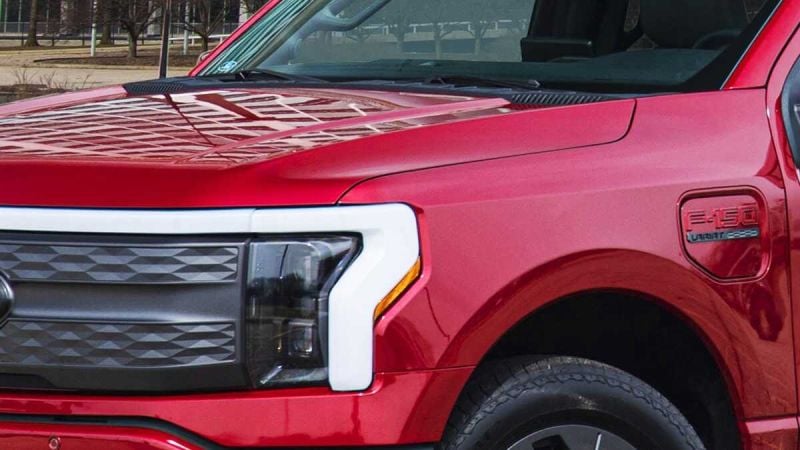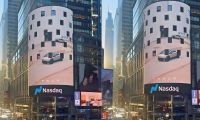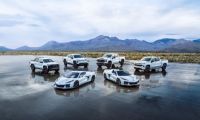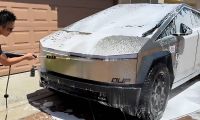Ford and GM are racing to prove their semi-autonomous driving app is the best. Both have enviable safety records. Each automaker is cautiously signing up new drivers and extending the number of miles driven successfully. Each new participant adds to the automaker’s user base and, for Ford, the area covered by the app. Ford has “BlueCruise” on its vehicles, while GM has “Super Cruise.” GM has used its LiDAR option and GPS to add large areas of the road system to its approved roads list. This go-slow approach has advantages, as Ford and GM control the number of folks added to their systems. This varies radically from Tesla.
Six Ford Electrics Qualify For Incentives.
Ford's "Blue Cruise" is available on F-150 pickups and Mustang Mach-E. "SuperCruise" is available in various models, including Cadillac, Hummer, and GMC pickups and SUVs.
A Major Difference In Strategy
In Tesla’s software updates, the automaker introduces new features available across its entire range of cars, and Tesla owners have new features almost instantly available. For instance, it was only a software revision from early this year where Teslas “learned” how to approach and navigate through intersections. The issue is that Tesla owners, as we will discuss in a moment, are just the automaker’s testers (as well as users/drivers, says Consumer Reports). Tesla has not learned to add features gradually as they are tested and proven. Its Active Driving Assist (ADA) Technology has caused it to lose several places on the latest Consumer Reports feature on Active Driving Technology, such as “BlueCruise,” “SuperCruise,” and AutoPilot.
GM Is Making A Bold Electric Vehicle Move
“BlueCruise” and “SuperCruise” and Tesla’s AutoPilot (FSD} are major examples of ADA technology. ADA is, to quote Consumer Reports, “the simultaneous use of a car’s adaptive cruise control (ACC) to control speed and lane-centering assistance (LCA) to control steering. ACC is an advanced form of cruise control that brakes and accelerates to keep the car a set distance” from the cars ahead. “LCA provides steering support to keep the vehicle at or near the center of the lane.”
Ford Maverick Prices Change On the Used Market
“Systems like ‘BlueCruise’ are an important advancement that can help make driving easier and less stressful,” says Jake Fisher, CR’s senior director of auto testing. “These systems can keep your vehicle from crossing into opposing traffic” during a “moment of inattention.”
Fisher pointed out that these ADA systems “don’t make a car self-driving. Instead, they create a new way of collaboratively driving with the computers in your car. When automakers do it the right way, it can make driving safer and more convenient when they do it the wrong way. It can be dangerous.”
Ford’s “BlueCruise” topped CR’s as the best ADA system earlier this year. It was followed closely by GM’s “SuperCruise” in a Cadillac. Number three was Mercedes-Benz’s “Driver Assist.” Tesla, number two in 2020, has dropped to seven in the latest ratings.
Ford's Mustang Remains Market Leader for 10th Year
According to CR, the reason for the major drop for Tesla is that Tesla “hasn’t changed AutoPilot basic functionality [very] much since it first came out…[instead] of just adding more features to it,” said CR’s Fisher.
The AutoPilot Suite Doesn’t Offer Key Features
“After all this time, AutoPilot still doesn’t allow collaborative steering and doesn’t have an effective driver monitoring system. While other automakers have evolved their ACC and LCA systems, Tesla has fallen behind.”
Tesla has updated its FSD technology several times since 2015, leaving some of its owners with the impression that each new update is finished work, but it isn’t. Each update is a work in progress. Indeed, many FSD updates have been labeled Beta versions by the automaker. Some drivers, who believe an FSD update is complete, learn that it is not ready the hard way. In the last eight years, there have been 19 AutoPilot-related deaths, according to www.tesladeaths.com, a clearinghouse of fatality-related information regarding FSD.
It's funny, but Tesla has neither said its FSD product, AutoPilot, is self-driving nor self-driving. This leaves it in the hands of the driver to decide if it is an update or a new release. Elon Musk has warned drivers to be “paranoid” when using AutoPilot, so it is safe to assume that at least one senior official knows that software updates are just that, especially if they are labeled Beta. Still, there doesn’t seem to be a factory verification and safety testing mechanism in place. Consumer Reports has complained that this maneuver lets the automaker use its owners as unwitting Beta testers. Other companies offering self-driving software told the magazine they do rigorous testing before releasing software. Ford and GM test their software before its release (over the air).
CR’s top-rated system, Ford’s “BlueCruise,” and GM’s “SuperCruise” use similar safety features to keep drivers safe. The features include driver-facing cameras, infrared scanning, and more to keep drivers safe.
The key “BlueCruise” safety features start with where it can be switched on. As noted, with each added user to the “BlueCruise” chain, Ford’s authorized “BlueCruise” adds new areas where its app can safely be used. Ford’s system relies on various video and computer technology, such as GPS, to expand. With its ever-expanding mapped universe, the Ford system relies on GPS to define the multi-lane and two-lane roadways where it will work.
Ford Earns Consumer Reports Top Rating
Ford has earned Consumer Reports’ top rating, followed closely by GM’s system. The key difference is how each automaker implements its safety system. Ford’s “BlueCruise” works with the many safety features already in the Ford F-150 pickup line and the Mustang Mach-E. Topping the list of safety tools, Ford relies on its adaptive cruise control system and driver-facing camera to work. Adaptive cruise keeps your vehicle a lock on safe distance behind the vehicles ahead. “BlueCruise” is enabled by Ford’s Co-Pilot software suite. It works with Ford’s safety package and includes Lane Change Assist and Predictive Speed Assist, among other features.
Consumer Reports looks at quietest 3 Row SUVs
The key to “BlueCruise” is the driver-facing camera which watches you as you drive, and if it senses inattention, it drops, warns you, and then drops out of “cruise” mode. GM’s system operates in a very similar manner.
GM’s system is illustrated quite nicely in a current commercial that clearly illustrates “SuperCruise” and its modes. In the GMC truck commercial, a pickup driver and his passenger move briskly down a twilight road. You can tell it is in “SuperCruise” mode because the driver has removed his hands from the steering wheel, and they are rocking out the tune “We Will Rock You.”
In the next scene, the same driver sets the vehicle, one supposes, to “SuperCruise” and then stretches out, casually placing his relaxed outstretched arms in the cabin to demonstrate how comfortable the driver can be if the “SuperCruise” mode is turned on.
Next, cutting to the exterior, we have the same GMC truck approaching a slower 18-wheeler. As the GMC pickup overtakes the far larger truck, the “SuperCruise” mode puts the pickup into a passing mode so that the pickup smoothly accelerates, swings into the empty left-hand lane of the two-lane road, and completes the pass. Meantime, inside the pickup, the driver and the passenger, one assumes, barely notice the ripple in their “cruising” life.
Of course, you must assume the driver maintains a close watch on the proceedings, ready to jump back into the fray (so to speak) and take over from the “SuperCruise.” Suppose the camera system, like Ford’s, senses that the driver isn’t focusing closely enough on the task. In that case, hands-off driving – the system shuts down “SuperCruise” and ensures the driver knows the vehicle isn’t in cruise mode.
Not All Ad Campaigns The Same
I haven’t seen any Ford ads that feature “BlueCruise,” though I have seen several public relations pieces that feature versions of the “BlueCruise” model. They also show the driver leaning back and relaxing with heightened awareness. The driver is waiting for something to go sideways. He is ready to retake control of the steering wheel.
As Consumer Reports points out, though “BlueCruise” did top the list, “SuperCruise” was number two, which is quite good for both. Early this year, CR tested a dozen or so different systems, and they found that the Ford and GM products were strong, but they were followed closely by Cadillac and “SuperCruise,” Mercedes-Benz. Tesla, which through 2020 was in second place, dropped to seventh. The reason:
Says CR’s Jake Fisher, senior director of auto testing, “After all this time, Autopilot still doesn’t allow collaborative steering and doesn’t have an effective driver monitoring system. While other automakers have evolved their ACC and LCA systems, Tesla has fallen behind.”
The “BlueCruise” and “SuperCruise” have warning modes where the driver is made aware of what is going on and allowed. The operator can then yank back control from the system and handle the vehicle normally. Indeed, they are quite similar. Where they differ is in their mapping and approved roads. For example, “BlueCruise” has established “Blue Zones” on about 130,000 miles of the Interstate system. The system maps to the known roads and divided highways. “SuperCruise” uses LiDAR mapping to know the roads where it can be activated. Both systems rely on driver-facing cameras for control and warning.
How The Systems Work
Each system will warn drivers when they sense the drivers aren’t remaining attentive to the road ahead. One difference that critics have pointed out is that when a GM product is in “SuperCruise” mode, the speed remains constant, even if traffic is speeding up or slowing. And “SuperCruise” relies on inputs such as lane markings and clarifies that if sensors are covered, there is a problem.
Both “BlueCruise” and “SuperCruise” have had very safe introductions. Both automakers have taken a cautious approach, gradually adding new members and roadways, and both have also built impressive records.
Ford Motor Photo
Marc Stern has been an automotive writer since 1971 when an otherwise normal news editor said, “You're our new car editor," and dumped about 27 pounds of auto stuff on my desk. I was in heaven as I have been a gearhead from my early days. As a teen, I spent many misspent hours hanging out at gas stations (a big thing in my youth) and working on cars. From there on, it was a straight line to my first column for the paper "You Auto Know," an enterprise I handled faithfully for 32 years. Only a few people know that I also handled computer documentation for most of my earnings while writing YAN. My best writing, though, was always in cars. My work has appeared in Popular Mechanics, Mechanix Illustrated, AutoWeek, SuperStock, Trailer Life, Old Cars Weekly, Special Interest Autos, etc. You can follow me on: Twitter or Facebook.












